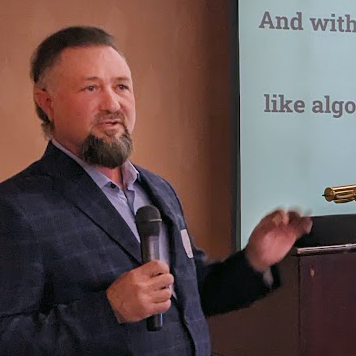
Across behavioral health organizations, artificial intelligence isn’t waiting for permission, and it’s not waiting for HIPAA policies to catch up. Staff are already using AI in ways that could implicate PHI, often without clear guidance or oversight.
Clinicians are using it to draft progress notes and simplify communication. Administrative staff are leaning on it to format letters, clean up documentation, and organize performance reviews. Even billing and operations teams are finding ways to speed up repetitive tasks.
None of this came from a systemwide rollout. It came from the ground up, quietly, organically, and with impressive creativity.
This is a big opportunity.
Smart People Are Solving Problems Without a Net
Let’s say this clearly: we believe in your team.
The people using AI aren’t cutting corners. They’re closing gaps. Most of the time, they’re doing it thoughtfully, even brilliantly. But when those efforts happen outside a shared structure, they introduce risk, albeit unintentionally.
Without clear direction, even helpful tools can create uncertainty. And when staff are unsure what’s safe, they either pull back or push forward alone. Neither approach scales well.
Leadership can change that.
The Old Playbook Doesn’t Work Anymore
There was a time when it was easier to sort systems into two camps.
If it handled PHI, it was locked down. If it didn’t, it flew under the radar.
But modern workflows don’t care about our categories.
Behavioral health professionals write drafts, review notes, format responses, and collaborate across platforms. PHI travels, sometimes directly, sometimes in fragments. That means systems that we never labeled as “clinical” are now part of the privacy equation.
Still, the solution isn’t to lock everything down. It’s to understand what really touches PHI and to apply oversight where it counts.
Smart policy means assigning relevance.
The Responsibility Belongs With Leadership
This is a governance challenge and a leadership moment. Frontline staff shouldn’t be left to guess what’s allowed, and waiting for regulators to deliver a blueprint is a recipe for misalignment. By the time external guidance arrives, your organization’s habits will already be deeply rooted.
You don’t need a 50-page policy to begin. What you need is intentionality.
Start by acknowledging that AI is already in use across your teams. Then, bring the right voices into the conversation—clinical, administrative, IT, and compliance—so you understand where AI is already delivering value. From there, clarify what deserves protection and what deserves support.
Your staff is building the engine. Leadership creates the rails that make it safe to run.
Enterprise AI Is a Framework for Growth
AI is already reshaping the present. The real question is whether that future will unfold with intention or improvisation.
An enterprise approach to AI offers more than risk reduction. It creates alignment across teams, systems, and expectations. That starts with selecting tools that are secure, auditable, and backed by the right agreements. It includes supporting specific use cases with clearly defined boundaries so staff know where AI fits and where it doesn’t.
Most of all, it gives your team the confidence to use powerful tools without fear of unintended consequences. In the right hands, structure isn’t a constraint. It’s what makes speed possible.
Guardrails Enable Progress
AI can move fast. But behavioral health moves with trust.
When your staff has clarity, they move with purpose. When they’re supported, they innovate freely. When leaders step forward with thoughtful direction, the whole organization accelerates together.
This is not about catching up. It’s about stepping in.
Your teams are already exploring what’s possible. Now it’s time to create the safety, structure, and leadership that makes those possibilities sustainable.
At Xpio Health, we work with leaders who recognize that governance is essential for driving innovation.
Where is AI quietly transforming your organization? And what kind of leadership will ensure it transforms the right way? Let’s talk about building that future together.
#AIinHealthcare #DigitalStrategy #HealthIT #BehavioralHealth #XpioHealth #PeopleFirst #HealthcareLeadership




